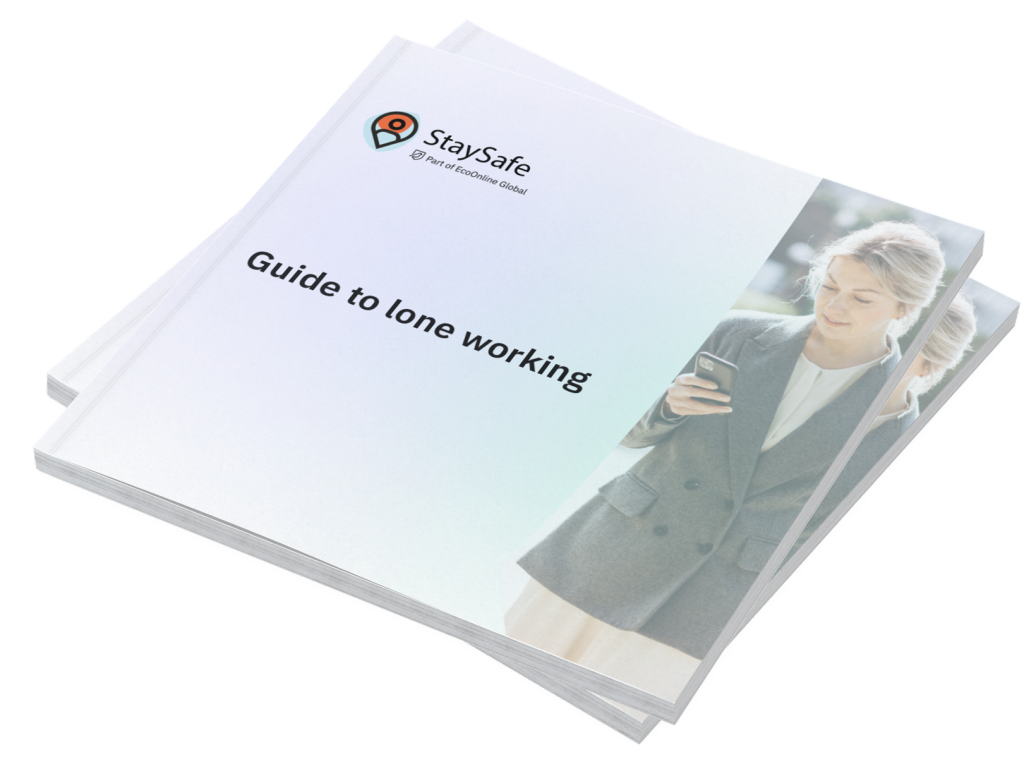New research reveals where the most stressed workforces are in the country
Stress plagues millions of us all over the world, and the latest figures suggest that we’re becoming more stressed than ever before. The latest research from Ipsos revealed that 62% have felt stressed to the point where it had an impact on how they lived their daily lives at least once in the past year, while 39% said they needed to take time off work due to stress. What’s more, Champion Health’s latest Workplace Health Report stated that 76% of employees felt stressed in 2023, up from 67% in 2022.
As we know, stress can come from anywhere, and affects everyone differently. However, things such as money problems, a lack of social interaction, lower levels of exercise, sleep deprivation, long working hours, and undertaking household tasks such as caring for friends and family members, can increase stress levels and result in serious issues – both in the home and at work, which, in turn, can make stress worse.
With the UK often cited as one of the highest stressed countries in Europe, thanks to stress levels higher than many other european countries, the lone worker experts at StaySafe decided to find where in the UK the most stressed workers are.
Looking at official statistics, including; average earnings, property prices – both to rent and purchase, the number of hours spent socialising and on entertainment, how much time people spend exercising, playing sports and doing wellbeing activities, the number of hours people spent on unpaid household work – such as unpaid adult care and volunteering, how many hours people work – including overtime, average time asleep and resting, and how much time they spend on personal care, we have calculated where the most stressed workforces are, as well as where our stress levels are lower.
Those in the West Midlands, Wales and Yorkshire and the Humber are the most stressed workforces
In what might be a surprising top three, workers in the West Midlands are the most stressed in the UK, scoring much higher than second-placed Wales and Yorkshire and the Humber, which rounded off the top three.
With a score of 88/120, those in the region, it seems, spend far less time on social activities, exercise, and personal care – something which can help to reduce stress levels – than the majority of other regions. What’s more, they also clock in more hours at work, including overtime, than the average worker (32.6 hours per week).
Sleep is crucial to our wellbeing, so it’s not all doom and gloom for those in the West Midlands; their sleeping seems to be on point, with just under nine hours of sleep and rest reported – maybe due to the increased working hours – while they also do far less unpaid work, such as adult care, than the average person.
Wales is a country full of stunning landscapes and breathtaking scenery, so it’s no surprise that they make the most of their rolling countryside. Coming second only to the South West, Wales’s residents earn an impressive two hours and 40 minutes of exercise per week.
Working too much and undertaking unpaid tasks reduces the time we are able to spend on activities we enjoy. And it seems that Wales’ residents also do the highest amount of unpaid household work, as well as the most overtime, with 52 hours of overtime added up over the year. Yet this extra work doesn’t seem to reflect their pay, as they take home a lower-than-average weekly salary.
With a score of 73/120, pay isn’t the only reason they are officially the second most stressed region. With so much time spent working and on unpaid household work, it’s no surprise that they have less time to spend on entertainment activities and socialising, coming well below average, compared to the other regions we looked at.
Yorkshire’s workers round off the bottom three, coming just behind Wales, with a score of 72/120. In addition to less time resting, they also clock in higher than average overtime, totalling just under 47 hours per year.
Yorkshire’s dwellers also spend fewer hours counting sheep and take home lower than average pay, which could be a contributing factor to the fewer hours of sleep. Money is one of the biggest causes of stress for us in the UK, and can cause financial anxiety, which can impact other areas of our lives. The good news for those in Yorkshire, however, is that property prices are on the lower end, which could help to offset lower pay. The average property price currently stands at £237,547 in the region, while monthly rents currently stand at £995.
Scottish workers clock in fewer hours and are, by far, the least stressed in the UK
At the other end of the table, it’s the Scots who are the least stressed. With a score of just 48/120, they scored well below the South West, who came in 11th place. Scottish workers spend fewer hours working than the average UK worker, which leaves more time for socialising and entertainment – something that is so important for us to relax and unwind. Spending just shy of four hours on entertainment, socialising and other free time activities per day, they like to unwind in the company of others.
However,it’s not all stress-free for Scottish workers; they do take on a higher than average amount of unpaid household work – just over two and a half hours per week – and, perhaps as a result, undertake less personal care than others in the UK.
The idea of overworking may have been somewhat glamourised in recent years, but workers in the South West rack up the fewest working hours out of anywhere in the UK, standing at 32.8 hours per week, including overtime.
Instead of working overtime, the South West was able to rack up a score of 60/120 due to spending more time exercising, playing sports, and undertaking wellness activities. However, of course, it’s not all smooth sailing.
Property prices are around £60,000 higher than the UK average in the area, which puts pressure on earnings – which, coincidentally, are only slightly above average. South West’s residents also seem to spend fewer hours per week on personal care, and a much higher than average number of hours on unpaid household tasks.
With a score of 61/120, the North East came just above the South West. Mainly due to lower property prices, both to buy and rent, as well as boasting the fewest hours of unpaid household tasks.
The savings on property, however, may be offset by the North East having the lowest average household income – more than £3,000 per month lower than the average. But it doesn’t seem to be playing too much on their minds, especially at night, spending just under nine hours per day sleeping and resting.
The capital isn’t as stressful as some believe
The pressures of London seemingly aren’t getting to workers in the capital. Scoring 68/120, London comes mid-table on our stress indicator. They did score highly for the number of working hours, which is the highest of all UK workers. However, with a weekly take home pay of just under £800, the extra hours are being compensated.
But of course, high property prices and less free time due to working longer hours means that London scored highly for time spent socialising – despite having a bustling city centre on their doorstep – and above average for the number of hours spent sleeping and resting.
Tips for reducing employee stress levels
There is no magic cure for stress, and reducing stress can take time, but there are steps you can take to help your employees reduce their stress levels at work.
Richard Bedworth, one of StaySafe’s safety experts, said:
Stress can affect all aspects of our lives, both personal and professional, and can become a cycle that many struggle to get out of. And employers have a duty of care to their teams to ensure they are supporting them as much as possible. Stress can be difficult to identify, specifically amongst lone workers, so it’s important to know what to look out for and take steps to improve stress levels for workers:
Encourage them to get active
One of the best ways to reduce stress is to move a little every day. Releasing mood-boosting endorphins, moving your body helps to alleviate stress levels almost immediately. Simple ways to encourage employees to get active include giving them reduced gym memberships, organising group exercise classes – both in the office and remotely – and even simply encouraging staff to get out and about during lunch breaks. After all, a simple 20 minute walk is all you need to help kickstart those feel-good hormones.
Get them talking
It can be easy to shut yourself off when you’re not feeling your best, but by encouraging workers to talk to one another can help reduce stress levels across the workforce. This can look like ‘happy hours’ where both in-office and remote workers can set time aside to just have a chat with colleagues about anything they wish. Training dedicated mental health first aiders who are available to talk to in confidence can also help to alleviate many of the worries that are plaguing individuals.
Work to prioritise tasks
We know work can be busy, but not everything needs to be done in one single day. So by supporting workers to prioritise tasks and splitting them out across the weeks and months, this will allow them to focus on the ones that will make a real difference now. It’s also important for managers and leaders to understand – and accept – that no one can do everything.
Make flexible working a priority
Flexible working is a non negotiable for many workers, and something that can dramatically help with reducing stress levels. Not only does flexible working enable workers to make work fit around personal commitments, such as childcare and other family responsibilities, but it also gives them the freedom to work when – and where – is best for them. All of this can help to reduce stress levels and promote a happier, healthier workforce.
Commit to safety
Stress can impact workplace safety, and vice versa, so it’s vital that business leaders commit to improving and maintaining the safety of their workers, whatever their role. Establishing robust health and safety procedures, utilising technology to keep workers safe and regular training and guidance are just a couple of the ways businesses can make safety their number one priority, helping to alleviate stress in the workplace.
StaySafe can help to reduce worker stress by ensuring lone workers, regardless of where they are, can be in constant contact with their employer and request help should they need it 24/7, via the lone worker app.
Methodology and data sources:
The Most Stressed Worker Report by lone worker app, StaySafe, discovers which regions workers in the UK/England are the most likely to be stressed.
Using a weighted ranking system, the report assigns a score to each region on the following metrics:
- Number of hours worked per week
- Average weekly earnings
- House prices, both to rent and buy
- Average daily time doing unpaid household work
- Average daily time spent on entertainment and socialising
- Average daily time taking part in sports, exercise and wellbeing
- Average daily time spent on personal care
- Average overtime done
- Each region can score a maximum of 12 points for each category, giving a maximum stress score of 120.
Sources:
https://www.nomisweb.co.uk/reports/lmp/gor/2013265924/report.aspx#tabwfjobs – Accessed 13.12.23
https://www.ons.gov.uk/peoplepopulationandcommunity/personalandhouseholdfinances/incomeandwealth/bulletins/timeuseintheuk/23septemberto1october2023 – November release – Average daily time (minutes) spent doing specified activities, all adults
https://www.rightmove.co.uk/news/house-price-index – December 2023
https://www.rightmove.co.uk/news/rental-price-tracker – Q3
https://www.ons.gov.uk/datasets/ashe-table-5/editions/time-series/versions/5 – Mean totals – September 2023
https://homelet.co.uk/homelet-rental-index/northern-ireland – November 2023
Are you protecting your lone workers?
Our comprehensive guide covers everything you need to know about lone working.
From identifying the lone workers in your organisation, to the risks they face in different environments, our lone worker guide will ensure you know how to keep your staff protected and meet your legal duty of care.
Yes, review policy
Explore our range of lone worker solutions
See StaySafe in action
- 2 week free trial
- See how employees can use the app to check-in & send alerts
- See realtime updates in the monitoring hub

Helen Down
“Helen has worked within the lone worker industry for nearly a decade. During that time she has written extensively about health and safety, risk, legislation, and lone working – including the Lone Worker Landscape Report.
Helen’s background is in marketing for start-ups and SMEs, where she has enjoyed working as part of the leadership team to grow the business. Outside of work, Helen is a mum of two and loves to drink wine in peace.”
Guide to lone working

A comprehensive lone worker guide for employers, managers and the self employed.
Guide to lone worker risk assessments

An extensive guide to risk assessments for employers or managers of lone workers.
StaySafe buyers guide

An informative guide outlining everything you need to know when purchasing a lone working solution.
Find out more about StaySafe solutions

Lone Worker App
Our intuitive app allows employees to check in safely following a lone working session and raise an alert in an emergency.

Cloud Based Monitoring Hub

Wearable Technology











